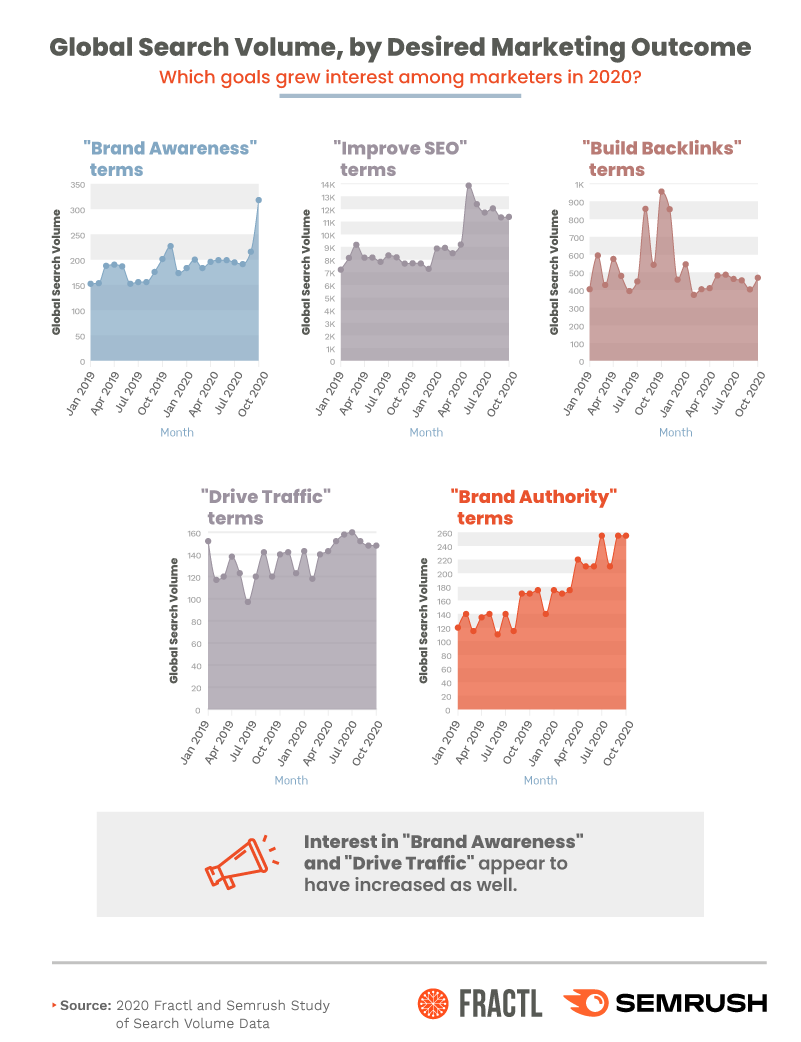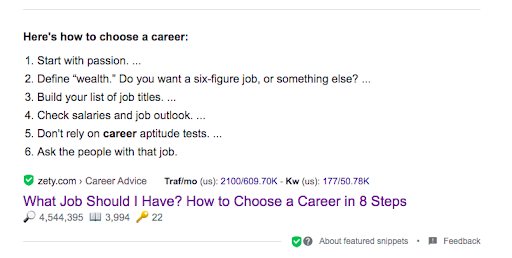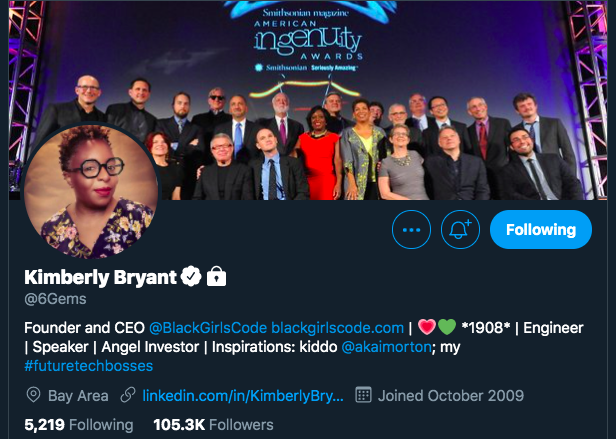Amanda Milligan
More posts from Amanda Milligan
A lot of clients come to us saying they want to be more respected in their space. They know their competitors are trusted and they want the same recognition, if not more.
This feels even more important now after the absolute disaster that was 2020. Consumers and clients alike just want to be able to count on brands and not stress over whether they’re making the right decision.
Marketers seem to know this. When we teamed up with Semrush to explore keyword search data in 2020 related to marketing goals, brand awareness and authority showed steady upward trends.

If you’re one of these marketers, I have some strategies you can use to improve your brand’s authority this year. It can’t happen overnight, but you can start implementing these strategies now to see results over time.
Strategy #1: Get media coverage
Media coverage can build the authority of your brand in a few ways.
For one, it’s hard for people to trust you if they don’t know you exist. Of course, you can pay for ads or kill it on social to get your name out there, but media coverage has other benefits, as well.
When reputable publications and websites reference your brand and link to your site, they’re sending a signal that they trust what you have to say. It’s third-party confirmation that you know what you’re talking about and/or have something to offer.
For example, for our client Stoneside, we surveyed folks to see how many purchased and cared for houseplants in 2020.
The report got coverage on TreeHugger and Simplemost, but it also served as great context for other articles, like HelloGiggles and The Weather Network.



Of course, getting media coverage isn’t easy. You need newsworthy content or an expert opinion to contribute, and you need to know how to pitch it to writers.
Small budget options
Are there industry blogs you can write a guest post for? Are there peers in your industry who are looking for quotes for their content? Start building connections with other industry experts. Cite their work in your content and build a rapport.
For example, I sometimes work with marketing tool brands like Semrush and BuzzSumo because those brands align well with Fractl, as we all work in the same industry.
You can also sign up for HARO, in which journalists post requests to speak to particular types of experts. However, it’s not often you’ll see relevant requests, and even then it’s a toss up whether they’ll reach out to you specifically.
Larger budget options
If you can afford it, a combination of content marketing and digital PR is the way to go. If you have resources internally — marketing folks who are savvy with data analysis and content creation — you can start by seeing if you have any internal data that would be interesting to a wider audience.
But if that doesn’t work, you may have to try some other approaches to create newsworthy studies, like:
- Surveying people.
- Analyzing publicly available data in new ways.
- Scraping social media for data.
- Running tests or experiments.
If the information or angle isn’t new, reporters aren’t going to be interested in covering it. When it comes time to pitching, the most important thing is emailing the right people. Make sure you really understand their niche and that what you’re pitching them fits it.
I know it’s a lot of work; but if you invest in it internally or hire an agency to do it for you, you can see an incredible lift in your brand’s authority.
Strategy #2: Audit all of your on-site content
This sounds like a big undertaking — and it is. But you can take it slow if that’s all your resources and budget will allow.
The reason I recommend this is because a lot of your brand’s authority is often communicated in the content people find when they search for answers or information.
Let’s say, for example, someone is searching for “how to choose a career.”
After the ads, I see this featured snippet as the top result.

I’ve personally never heard of Zety, but seeing them in this position signals to me that they probably know what they’re talking about, so I click through. And if I like the article, now Zety has instantly built some credibility in my eyes.
This is what you want with your content. You need to go through all your on-site material to see what can be improved.
Start by seeing what is already ranking relatively well, because that means you’re on the right track. I believe it was Aleyda Solis who has wisely recommended even optimizing pages that are ranking in the No. 1 spot, because your competitors are probably trying to surpass you, and you always need to be making sure your content is up to date and valuable, even as time goes on.
Once you’ve invested in improving the pages already ranking on the first page, then start considering the following questions:
- What is missing from our low-performing pages? Can some be combined into a more useful, robust post?
- Does all the content you have answer your audience’s most important questions? (You may need to do more updated questions/keyword research to confirm this.)
- Are you linking well between your pages to ensure you’re calling out your most important and useful resources?
There are a million other things you can do, including more on the technical SEO side. But the answer isn’t always creating more content but rather fine-tuning what you’re already working with. (Though oftentimes it’s a combination of both!)
Strategy #3: Go all in on personal branding
There are the obvious examples like Elon Musk and Steve Jobs — people who became almost synonymous with their brands. But this isn’t just a strategy for super-rich tech founders.
Even within the marketing industry you see it with people like Rand Fishkin (formerly Moz and now SparkToro) and Brian Dean (Backlinko). If your audience starts to trust you and/or your employees as individual people, they’re much more likely to trust the brand you represent.
Here are a few ways your company’s rep (whether it’s the founder, you, or someone else) can build personal brand authority.
Literally show yourself in your content
Bucketlist Bombshells founders Cassie Torrecillas and Shay Brown created a brand (“Cassie & Shay”) based on their own goals and experiences. They appear multiple times on their homepage and they continue to have a strong presence on their social channels.
View this post on Instagram
You can try directly addressing your audience by writing posts, leveraging your social accounts, using live video and more.
Explain your vision
It’s one thing to have a paragraph on an About page talking about the company’s goals and why it was created. It’s another to get a little more personal about why the founder took a risk to address a problem they encountered that needed solving.
The founders of Lovevery do this in a big way by providing a personal video of their journey to launching the company.
Figure out how your brand rep’s personal story and the story of your brand tie together. Why do they care about the company? What do they hope the company achieves? Move away from sterile corporate speak and into more humanized communication.
Be authentic
It’s hard to pin down exactly how to do this, but clearly the key is to be sincere in what you share. You can share your values, your day-to-day life, your fears, your aspirations, etc. You can promote other people and brands you admire who share your values. You can post valuable resources that help your followers/audience.
I think the Twitter account of Kimberly Bryant, founder and CEO of Black Girls Code, is a perfect example of how you can provide thought leadership and build authority on social media. She tweets in support of Black professionals in tech, uplifts Black voices, talks about her dog and current events, and a slew of other things. Basically, she’s authentic.

I also really admire that she feels free to protect her tweets, which says to me that she’s not interested in hearing from people who don’t have her values. With this authenticity, she’s also lifting the Black Girls Code brand and bringing even more awareness to that wonderful initiative.
Conclusion
Providing real value through content is an excellent way to build authority in the short and long term. The key is figuring out the best route for your investment. But make sure to choose one, because this is a strategy a lot of brands are going to be focusing on, and you don’t want yours falling behind while your competition builds lasting trust.
If you’re stuck, think about where your expertise may be missing. Perhaps there aren’t enough online communities talking about what you or your brand have to offer, or there are no blog posts about a problem you can solve. Start there and then keep building!
6 reasons why reporters aren’t interested in your content marketing































Comment